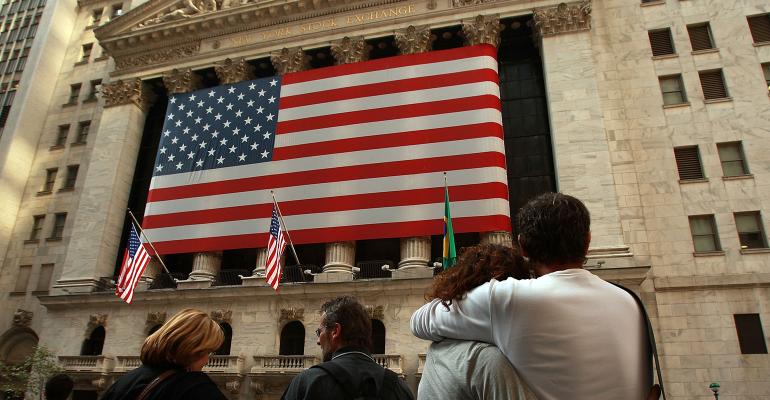By Aaron Brown
(Bloomberg Opinion) --Perhaps the best-known piece of financial advice is that retail investors should buy and hold the market, which in practice usually means owning an index mutual fund or exchange-traded fund that mimics the performance of the S&P 500. This has been a winning strategy for investors over the decades, outperforming fads that come and go and paying for active management.
S&P 500 stocks are cheap to trade and available in retail-friendly form. They are watched closely by legions of expert financial analysts. They represent most of the big sectors in the world and companies that do business in nearly every country and hold nearly every kind of asset. So they are sensible choices for the core of most investors’ growth portfolios.
All of the above is true however you choose to weight your S&P 500 portfolio. The traditional, and by far the most popular approach, is to weight by market-capitalization. In theory this minimizes transactions, because you don’t have to rebalance as stocks go up and down in price. But a recent paper by Lasse Pedersen (a former colleague of mine at AQR Capital Management) has shown that you actually do need to do a fair amount of trading due to dividends, mergers, index changes and other actions. Moreover, trading in S&P 500 stocks is so cheap that the additional trading needed for other reasonably passive weighting algorithms add little to costs.
The downside is that market-cap weightings leave you overexposed to overvalued companies, and underexposed to undervalued ones. Nobody knows which is which, but you still take a mathematical loss. Some 21 percent of your exposure is in the top 10 of S&P 500 companies, and the index is heavily slanted to technology, healthcare and financial firms. The weighted-average market-cap of your companies is $180 billion, which is about the same size as Procter & Gamble Co. or Citigroup Inc.
One alternative is to put equal amounts in each S&P 500 company. That drops the weighted-average market-cap of the portfolio to $45 billion, which is the same size of companies such a Ford Motor Co. or Prudential Financial Inc. Since 1997, the equally-weighted portfolio has outperformed the cap-weighted, 10.2 percent annualized versus 8.2 percent, and it won in 13 of the 21 years.
But if you like that idea, why not go a step further and use inverse-market-cap weights, which is to put more money in the smaller companies? Then you get overexposed to the undervalued companies and underexposed to the overvalued ones. Your weighted-average market cap drops to $15 billion. This portfolio has returned an annualized 11.4 percent since the beginning of 1997.
Raw return comparisons can be misleading, because these three portfolios have different volatilities and exposures. You get a clearer idea looking at Fama-French Factors. These decompose portfolios into exposure to the market plus four other factors that have shown to deliver additional expected returns.
Since 1997, the S&P 500 has a 0.92 exposure to the global stock market portfolio, and a negative 0.41 exposure to the “size” factor, with zero excess. This means $100 in the S&P 500 has been like putting $92 in the global stock market, $8 in money markets and making a good-sized bet that big stocks will outperform small stocks.
The equally-weighted S&P 500 has a 1.03 exposure to global stocks, -0.16 to “size” and 0.32 to “value,” and no excess. So $100 in it is like $103 in global stocks, borrowing $3, making a smaller bet that big stocks will beat small stocks, and a good-sized bet that value stocks will outperform non-value stocks. The inverse-weighted S&P 500 has a 1.22 exposure to global stocks and a 0.50 exposure to “value.” It also has an excess annualized return of 4.4 percent.
The bottom line for investors is that capitalization-weighted S&P 500 funds are still a great deal, and you know for sure that the low fees will be there every year. If you like big stocks and non-value stocks, then it makes even more sense. But if not, you can always combine it with some small cap and value funds even that might give away some of your fee advantage. Equal-weight can make sense as well if you think the extra fees are worth paying for the reduced big stock and increased value stock exposures. Inverse-cap gives even better factor exposures and has outperformed significantly since 1997, but who knows what the next 20 years will bring?
To contact the author of this story: Aaron Brown at [email protected]
For more columns from Bloomberg View, visit bloomberg.com/opinion





